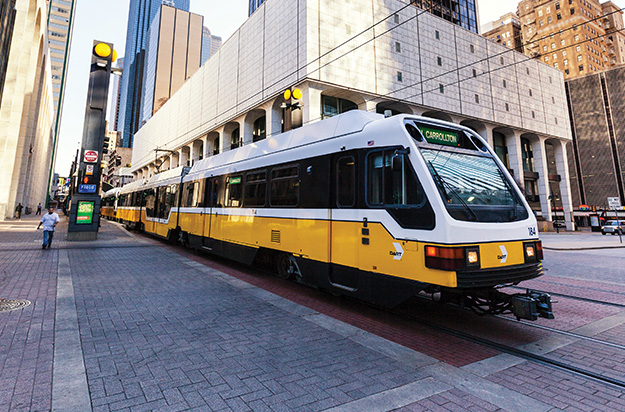Fall 2017: Building Livability
UTA researchers are creating a more sustainable, affordable North Texas for the future.
Skip to content. Skip to main navigation.
UTA researchers are creating a more sustainable, affordable North Texas for the future.
From carbon dioxide conversion to landfill mining, researchers at UTA are seeking viable alternative energy options.
Found in everything from space shuttles to dental fillings, composite materials have thoroughly infiltrated modern society. But their potential is still greatly untapped, offering researchers ample opportunity for discovery.
Within the particle showers created at the Large Hadron Collider, answers to some of the universe’s mysteries are waiting.
Model systems like pigeons can help illuminate our own evolutionary and genomic history.
UT Arlington's tiny windmills are bringing renewable energy to a whole new scale.
The stability of our highways, pipelines, and even manholes is reaching a breaking point.
Scientists believe they have discovered a subatomic particle that is crucial to understanding the universe.
UT Arlington researchers unlock clues to the human body’s most mysterious and complex organ.
UT Arlington researchers probe the hidden world of microbes in search of renewable energy sources.
Wounded soldiers are benefiting from Robert Gatchel’s program that combines physical rehabilitation with treatment for post-traumatic stress disorder.
Tiny sensors implanted in the body show promise in combating acid reflux disease, pain and other health problems.
Nanotechnology researchers pursue hybrid silicon chips with life-saving potential.
Biomedical engineers combat diseases with procedures that are painless to patients.

Earlier this year, the City of Dallas commissioned Shima Hamidi, assistant professor in the College of Architecture, Planning, and Public Affairs, to conduct an equity analysis of Dallas Area Rapid Transit. The goal? To determine the relationship between economic disparity and access to transportation in DART's service area.
Dr. Hamidi's analysis found that more than 65 percent of Dallas-area residents who depend on public transit have access to less than 4 percent of jobs. She also discovered that transportation is unaffordable to more than 97 percent of Dallas' population.
The results of her study not only sparked debate at the highest levels of city administration and within DART, but also ignited change. Dallas hired a new transportation director charged with drafting the city's first mobility policy, while DART board members delayed until 2018 a vote on a significant fare hike that was previously poised to take effect in late 2017. The agency is also putting together an action plan to address issues Hamidi uncovered and is reconsidering its criteria for future investments.
The DART study is just one of many such projects UTA is currently tackling. Hamidi, who is director of CAPPA's Institute of Urban Studies, is also exploring what a northern entrance/exit to Love Field Airport would do to the surrounding community. The City of Dallas awarded CAPPA a grant for the project, which is expected to be presented sometime in the fall.
In the last three years, the volume of passengers at Love Field has almost doubled, going from 2.2 million to nearly 4 million. Yet the airport only has one entrance, on the south side via Mockingbird Lane. Now, the city is considering adding another.
Hamidi and her team will consider the best use of the land to the north of Love Field, as well as traffic patterns that would most easily get vehicles in and out of the airport. She is investigating three concept possibilities for the area near what would be a new northern entrance. Those development plans call for an innovation hub, an innovation office park, or an innovation mixed-use park; the city could also opt for a hybrid of the three plans. Right now, the team is talking to property owners, airport passengers, and residents to gather feedback on what might be the best fit for the area.
"Our goal is to leverage the assets that already exist there—such as proximity to the largest city airport in the country and the unique position of Love Field in Dallas—to push what kind of development might go there," says Hamidi. "It could be high-tech or some employment hub that would complement the sectors that those travelers represent."